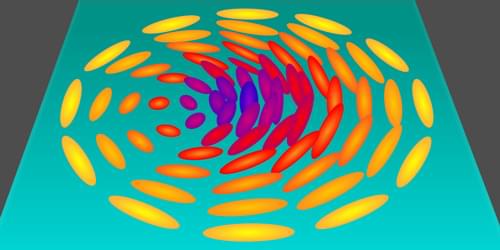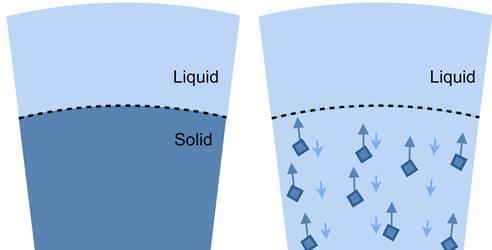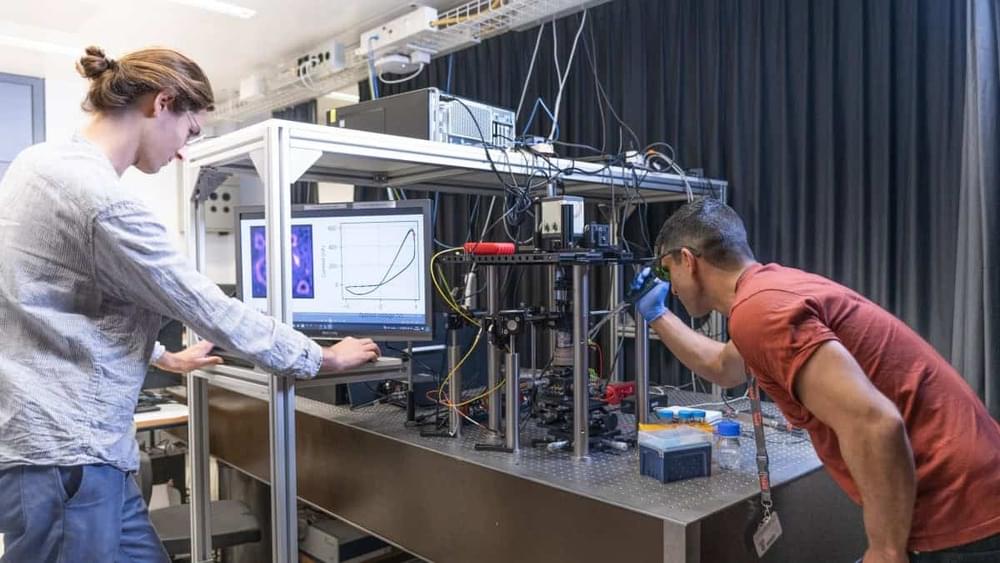Paul Kempler runs a master’s program at the University of Oregon that provides hands-on electrochemistry training for those wanting to enter the field without them having to take a five-year-long PhD.



Using thin layers of chiral nematic liquid crystals, researchers have observed the formation dynamics of skyrmions.
A skyrmion is a topologically stable, vortex-like field configuration that cannot be smoothly morphed to a uniform state [1]. First proposed by physicist Tony Skyrme in 1961 as a model of the nucleon [2], the concept has since been studied in condensed-matter physics and adjacent fields [3]. In particular, skyrmions have cropped up in studies of magnetism [4], Bose-Einstein condensates [5], quantum Hall systems [6], liquid crystals [7], and in other contexts (see, for example, Viewpoint: Water Can Host Topological Waves and Synopsis: Skyrmions Made from Sound Waves). Skyrmions exhibit fascinating properties such as small size, stability, and controllability, which give them great potential for applications in spintronics, data storage, and quantum computing.


More than 97% of the stars in our Galaxy will end their lives with a whimper—slowly cooling as stellar remnants known as white dwarfs. The cooling of white dwarfs follows a pattern that was thought to be so predictable that the temperatures of white dwarfs are used to determine the age of surrounding stars. New findings, however, indicate this pattern may need revision [1]. Predictions made by Antoine Bédard of the University of Warwick, UK, and his colleagues now indicate that some white dwarfs may undergo a process that “reinvigorates” the stars, significantly slowing down the cooling process. That change could alter the calculated ages of white dwarfs by billions of years.
When a small star (one with a mass 8 times or less that of the Sun) runs out of nuclear fuel, it sheds its outer layers to form a planetary nebula. The core of the star then collapses into a white dwarf. Producing no heat, white dwarfs spend their existences radiating their remaining energy into space, cooling and solidifying from the inside out. Or so astrophysicists thought.
In 2019, this model was disrupted by astronomers analyzing data from the European Space Agency’s Gaia mission. The researchers identified a previously unknown population of white dwarfs within the Milky Way with anomalous properties [2]. As stars age, their velocities increase with respect to nearby stars because of repeated gravitational interactions with those stars. The newly identified white dwarfs, dubbed the Q branch, have much higher average velocities than models indicate they should have based on their temperatures, a finding that suggests that the Q-branch white dwarfs are older than previously thought. Some process is slowing down the cooling.

From tsinghua university, SIGS, & meta reality labs.
MultiBooth.
Towards Generating All Your Concepts in an Image from Text https://huggingface.co/papers/2404.
This paper introduces MultiBooth, a novel and efficient technique for multi-concept customization in image generation from text…
Join the discussion on this paper page.


The International Space Station has long been known as a unique — and uniquely gross — environment. But according to a new NASA study, it has stuff growing on it that is straight-up alien, too.
In a press release, NASA said that when scientists from the Jet Propulsion Lab looked at samples of the drug-resistant Enterobacter bugandensis bacteria found on the orbital outpost, they found that the strains had mutated into something that literally doesn’t exist on Earth.
“Study findings indicate that under stress, the ISS isolated strains were mutated and became genetically and functionally distinct compared to their Earth counterparts,” the press release reads. “The strains were able to viably persist in the ISS over time in significant abundances.”

The process, called primary endosymbiosis, has only happened twice in the history of the Earth, with the first time giving rise to all complex life as we know it through mitochondria. The second time that it happened saw the emergence of plants.
Now, an international team of scientists have observed the evolutionary event happening between a species of algae commonly found in the ocean and a bacterium.
“The first time we think it happened, it gave rise to all complex life,” said Tyler Coale, a postdoctoral researcher at University of California, Santa Cruz, who led the research on one of two recent studies that uncovered the phenomenon.

